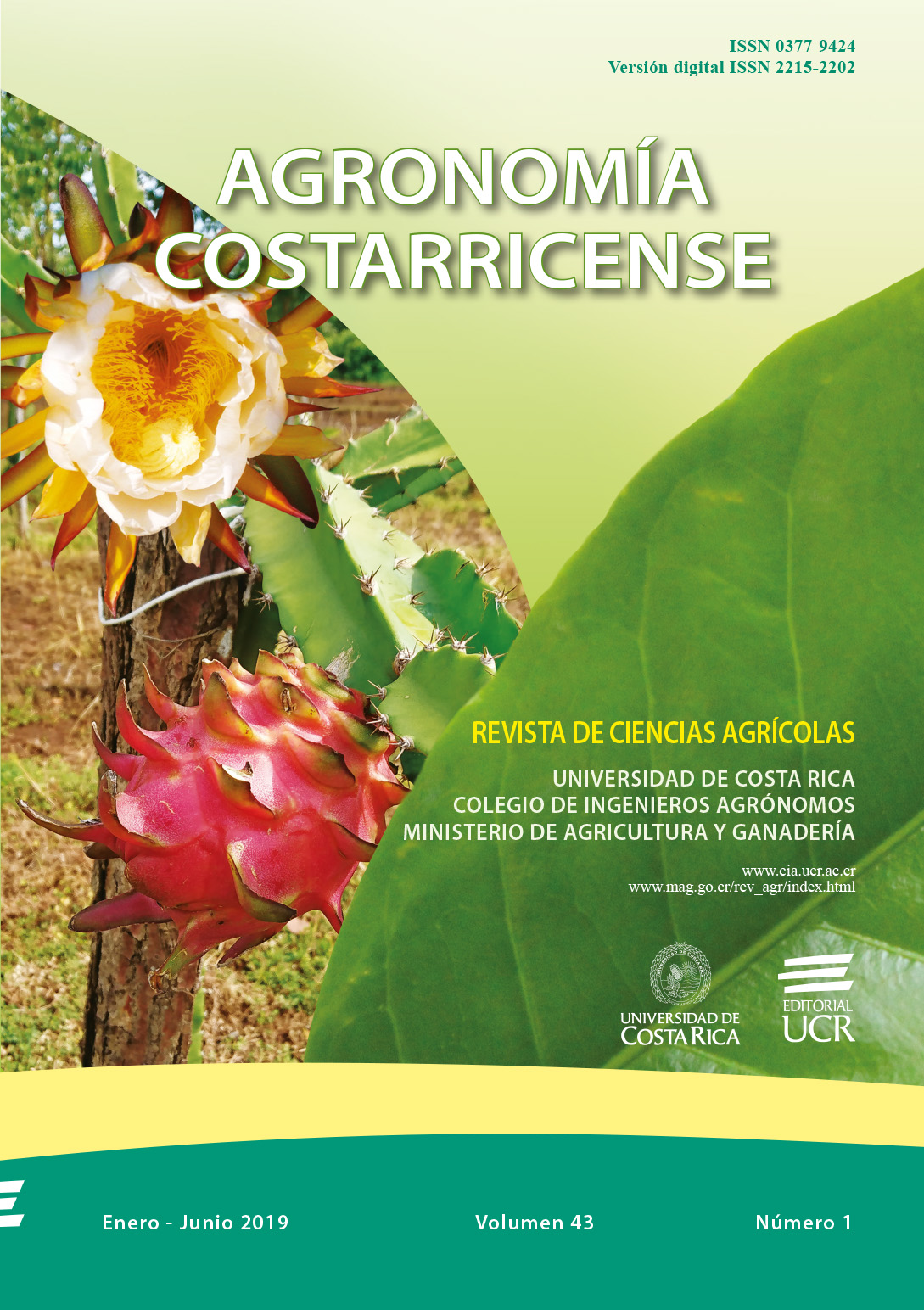Abstract
Tectona grandis L.f. (teak) is the most cultivated precious wood forest species in the world and in Costa Rica it has been used in commercial reforestation projects. Among the silvicultural activities of these plantations are weed and the prevention and management of pests. Recently, cover crops have been used as an alternative method of weed control, however, the effect of this control on pests is unknown. A study was developed to determine the effect of the use of cover crops in the control of weeds and to evaluate the presence of herbivores and pathogens in young teak stands in the South Pacific of Costa Rica A randomized complete block design with 3 replications and 7 treatments was used: Control (without weed control), Chemical weed control, Manual weed control, Cover crop Canavalia ensiformis, Cover crop Vigna radiata, Mix between Vigna radiata and Pueraria phaseoloides and Cover crop Crotalaria juncea. Olivea tectonae (“teak rust”) and Rhabdopterus sp. (“Teak skeletonizer”) were selected as target disease and pest where 2 evaluations of the incidence and severity index were made, when the plantation was 6 and 12 months old. Despite the fact that incidence values were higher than 60% in both, the average values of severity were grouped in the minor categories. In addition, no significant differences were found among treatments and the incidence or severity of the evaluated pests, which demonstrates that the use of cover crops can be a viable alternative for the control of weeds in a teak plantation. Therefore, we recommend to continue with studies that evaluate the effect of the use of coverages in the presence and severity of teak pests in different regions of the country.
##plugins.facebook.comentarios##

This work is licensed under a Creative Commons Attribution-NonCommercial-NoDerivatives 4.0 International License.
Copyright (c) 2018 Agronomía Costarricense


